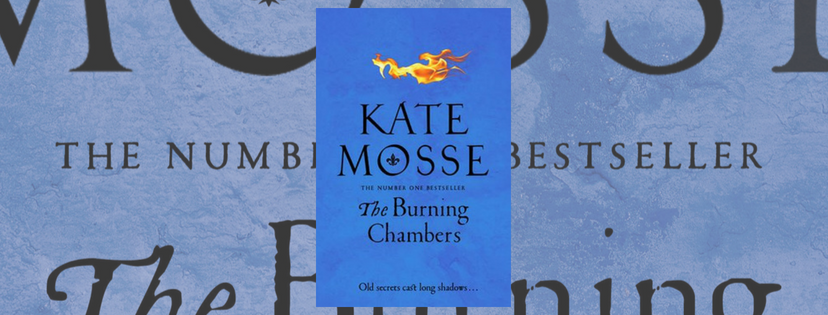
France, 1562. The Languedoc region is on the cusp of religious war.
Threatened by the spread of Protestantism, the Catholic powers are pushing back against edicts ordering tolerance, by stock piling weapons and torturing suspected Huguenots. Old friends become bitter enemies, secrets are bought and sold, and the region moves ever closer to bloody conflict. In the Occitane capital Toulouse, rumours abound, with tales of stolen relics, lost Wills, temple massacres, and protestant plots spreading like wildfire.
Meanwhile, in Carcassonne, the daughter of a free-thinking Catholic bookseller receives a chilling note, bearing a familiar family seal. But before Minou can discover the meaning of the note, she meets a Dutch convert, named Piet, who comes laden with secrets of his own.
A family’s dangerous secret meets with nationwide religious dissent in The Burning Chambers, the first in a new trilogy from historical fiction maven Kate Mosse. Set in sixteenth century France, The Burning Chambers features the rich historical research and wonderful attention to detail readers have come to expect from Mosse in the years since her 2005 novel Labyrinth first took the book world by storm.
It’s a lengthy read, coming in at just under 600 pages, but fans of historical fiction will absolutely lap it up – I for one read most of it in a day! Weaving a central romance with simmering religious tension, The Burning Chambers builds slowly, revealing secrets and naming traitors gradually as the book rolls on. Divided into three parts, the strongest is undoubtedly the second, detailing the months spent in Toulouse, a city constantly courting violence as Huguenots and Catholics live and work side by side. It’s a tense couple of hundred pages, as Piet and the reader try to work out who they can trust, and as Minou attempts to free her gentle aunt and wayward brother from the abuses of her violent uncle and his conniving sister. Mosse doesn’t shy away from the lengths some will go to in the name of religion, and there are moments of brutal violence, as well as ones of cold-blooded betrayal, to get the heart racing and the blood boiling.
Minou and Piet are a well matched pair, and it’s a good thing too, as their story takes over in the final third, and a degree of investment in their romance is absolutely needed. The third section isn’t perhaps quite as strong as the others, with an underwhelming villain and an ending that takes a little too long to wrap up, but it’s filled with some wonderful characters (including Minou’s aunt, who turns out to be quite the badass) and, when the (happy) epilogue comes, it’s really quite satisfying.
Framed by an 1862 story of a woman exploring her family’s history in South Africa’s Cape of Good Hope, the scene is set for the next in the series, The City of Tears, due out in 2020. But, for now, enjoy Mosse in her absolute element, in this rich, well researched historical romance.
Kate Mosse’s The Burning Chambers is available now through PanMacmillan.
———-
